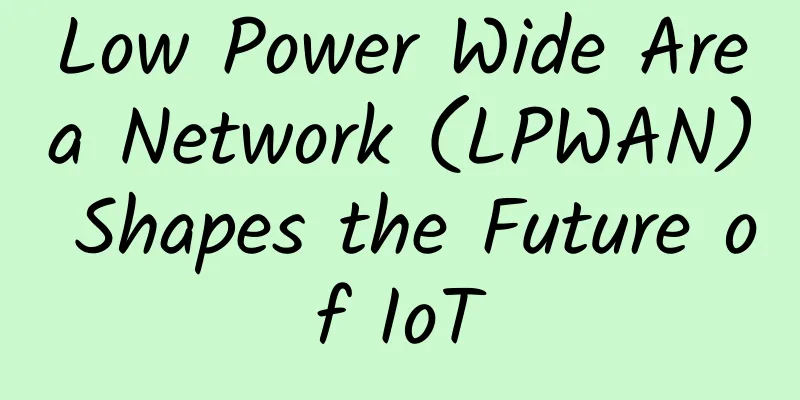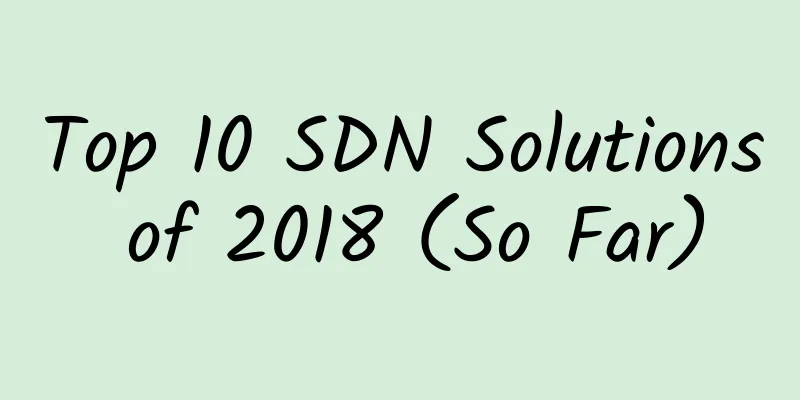5G is just about faster internet speed? If you think so, you are out!!!

|
1. What is 5G? The world's communication technology has gone through several important eras: 2G, 3G, and 4G:
The fifth generation is 5G, and its biggest feature is the realization of high-frequency transmission!
The arrival of 4G seems to be just yesterday, but 5G is just around the corner. According to the plan of 3GPP, large-scale testing and deployment of 5G will begin as early as 2019. In other words, we can enjoy the new experience brought by 5G in more than a year at the earliest. However, as a global communication standard, the significance of 5G is certainly not limited to faster network speed and better mobile broadband experience. Its mission is to connect new industries and give birth to new services, such as promoting industrial automation, large-scale Internet of Things, smart homes, and autonomous driving. These industries and services have put forward higher requirements for the network, requiring the network to be more reliable, low-latency, wide-coverage, and more secure. The different needs of various industries urgently call for a new flexible, efficient, and scalable network. 5G came into being. 5G is an end-to-end ecosystem that will create a fully mobile and fully connected society. 5G mainly includes three aspects: ecology, customers and business models. It delivers a consistent service experience, creates value for customers and partners through existing and new use cases, and sustainable business models. The 2/3/4G era was mainly limited to the access network and the core network that evolved with it, focusing more on technology. The goal of 5G is an "end-to-end" system architecture. Technically speaking, 5G will also achieve the separation of software and hardware that has never been seen in telecommunications, and introduce the concepts of cloudification and virtualization adopted by IT data centers. In short, 2/3/4G are technologies that drive monotonous services and business models, while 5G will use various technologies to meet and support the constantly changing ecosystem and business models. 2. 5G Key Technologies 2.1 Massive MIMO, CU separation, network slicing, and multiple access From the beginning of its design, 5G network not only emphasizes the improvement and optimization of network performance, but also attaches importance to the support of various business scenarios, making 5G a network oriented to business and user needs. For the 5G core network, the main features include network CU separation (control plane and user plane separation), network function modularization, introduction of network slicing, introduction of edge computing, optimization of QoS mechanism, support for multiple access, etc. 1. Massive MIMO Capacity = bandwidth * spectrum efficiency * number of cells The capacity of 5G is 1,000 times that of 4G, with a peak rate of 10Gbps-20Gbps. According to this formula, there are only three ways to increase capacity: increasing spectrum bandwidth, improving spectrum efficiency, and increasing the number of cells. Increasing the number of cells means building more base stations, which is too costly. As for spectrum bandwidth, many foreign operators obtain spectrum resources through auctions. Therefore, operators prefer to increase capacity by improving spectrum efficiency. Error correction and coding are close to the Shannon limit, so the most effective method is multi-antenna technology. Therefore, complex antenna systems such as high-order MIMO and Massive MIMO will inevitably become the first choice for 5G. 5G can also expand the coverage of high-frequency bands, which is the C-RAN structure + Massive MIMO. 2. CU separation - separation of control plane and user plane In such a network architecture, the control plane and the user plane are separated. The macro cell working in the low frequency band and with a large coverage area is mainly responsible for the control plane and transmits control signaling, while the small cell working in the high frequency band is only responsible for the user plane and transmits user data traffic. This architecture not only solves the problem of high capacity and full coverage, but also reduces switching and network signaling. The C-RAN architecture is to move the RRU remotely, centralize BBU resources, and make them software-based, virtualized, and cloud-based, transform the telecommunications center room into an IT data center, and introduce mobile edge computing.
Without considering retransmission, the internal latency of the LTE network is less than 20ms, while the latency to ping an external server is usually more than 40-50ms. The propagation speed of optical fiber is 200 kilometers. When dealing with latency-sensitive use cases, 5G requires the access network latency to be no more than 0.5ms, which means that the physical distance between the 5G central computer room (or data center) and the 5G cell (base station) cannot exceed 50 kilometers. Faced with the challenge of physical latency, we have to consider introducing mobile edge computing (MEC) and edge data centers in the access network, that is, sinking some functions of the previous core network and application network to the access network. Note: The propagation speed of optical fiber is 2/3 the speed of light. 2/3c=2*10^8/s=2*10^5/ms=200km/ms. If we use four words to summarize the design principles of 5G networks, they are: decoupling, software, open source, and cloud.
The logical functional architecture of the 5G network defined by 3GPP is shown in Figure 2. As can be seen from Figure 1, the control plane functional entities of the core network include AMF (Access and Mobility Management Function), SMF (Session Management Function), PCF (Policy Control Function), AUSF (Authentication Server Function), UDM (Unified Data Management), etc.
AFM implements registration management, connection management, mobility management, user accessibility management, participation authentication and authorization-related management functions, etc. SMF is mainly responsible for session management related functions, including establishment, modification, and release. Specific functions include IP address allocation during session establishment, selection and control of user plane functions, configuration of service routing and UP traffic guidance, determination of SSC mode, and configuration of UPF QoS policy. PCF has the same functions as the network element PCRF in the 4G network. It obtains user subscription policies from UDM and sends them to AMF, SMF, etc., which are then further sent to terminals, RAN and UPF by AMF and SMF modules. AUSF implements user authentication and verification. The main functions of UDM are the management of various user contract data, user authentication data management, user identification management, etc. UPF (User Plane Function) mainly provides service processing functions of the user plane, including service routing, packet forwarding, anchoring function, QoS mapping and execution, uplink identification and routing to the data network, downlink packet caching and notification triggering of downlink data arrival, and connection with external data networks. In the R14 phase in 2017, 3GPP will once again move towards a separate core network architecture. This time it will be more thorough, and we can call it a "fully separate" network architecture.
In the "fully separated" architecture, SGW and PGW are separated into the control plane and the user plane (as shown in the yellow filled part of the figure above, SGW is separated into SGW-C and SGW-U, and PGW is separated into PGW-C and PGW-U). Similarly, SGSN is also separated into the control plane (SGSN-C) and the user plane (SGSN-U). Along with the separation of user/control planes, the sinking and distribution of the core network comes the deployment of distributed data centers in or close to the access network, and the introduction of NFV-based MEC (mobile edge computing). 3. Network slicing Network slicing is one of the key technologies of the 5G core network and a direct reflection of the concept of network as a service. Network slicing itself is a product and service. The starting point of network slicing design is to flexibly organize the network according to the different needs of the business for the network, to form a network that provides exclusive services for specific businesses, and to achieve a high degree of matching between the network and the business. The entire end-to-end network slice includes the entire slice of the access network and the core network. The usual core network slice includes the control plane functions and user plane functions introduced above. Different network slices may share some control plane functions, but will not share user plane functions. Network slicing serves specific services. Services between different slices are isolated and do not interfere with each other, which can meet the needs of vertical industry applications without the need to independently build dedicated networks but can enjoy exclusive network resources. Under the technical architecture of NFV/SDN, these resources can be flexibly scheduled and allocated on demand, and the network can be dynamically expanded or reduced in capacity, reducing the cost of network construction and operation while meeting the needs. In today's mobile networks, the main device is the mobile phone. RAN (DU and RU) and core functions are built with dedicated network equipment provided by RAN vendors. In order to implement network slicing, Network Function Virtualization (NFV) is a prerequisite. Basically, the main idea of NFV is to deploy the network function software (i.e. MME, S/P-GW and PCRF in packet core and DU in RAN) all in virtual machines on commercial servers instead of separately deployed in their dedicated network equipment. In this way, RAN is treated as edge cloud and core functions as core cloud. The connection between VMs located in edge and core cloud is configured using SDN. Then, slices are created for each service (i.e. telephony slice, massive IoT slice, mission-critical IoT slice, etc.). The main function of network slicing is to isolate different slices from each other and ensure that each slice is not interrupted by congestion in other slices. In order to meet the low latency requirements of services while saving unnecessary network transmission requirements, MEC is introduced in 5G. Its core is to deploy some core network functions, business functions and content resources close to the user side. 4.Support multiple access In order to achieve network optimization, efficient resource utilization, and enable terminals to use 5G services in a wider coverage area, 5G networks require support for multiple access technologies, including 3GPP access and non-3GPP access, which means that in addition to supporting 4G and 5G, WLAN access and satellite access are also supported. Unlike 4G, which supports non-3GPP access, the 5G core network proposes the concepts of registration management and connection management for non-3GPP access, and manages 3GPP access and non-3GPP access through a unified 5G core network. |
>>: Three ways artificial intelligence will change IT service management
Recommend
An Shumei, President of Ruijie University: The difficulty of integrating industry and education lies in the change of concepts
[Original article from 51CTO.com] "Industry-...
Why do 5G mobile phones support more frequency bands?
How many 5G frequency bands a mobile phone can su...
PIGYun: Los Angeles, USA/Korea VPS 60% off in July, monthly payment starts from 14.4 yuan
PIGYun is a Chinese merchant founded in 2019, pro...
Cache + HASH = high concurrency? You think the high concurrency architecture is too simple!
[51CTO.com original article] In the Internet era,...
Design Ideas for Billion-Level Traffic Gateway
[[384427]] This article intends to discuss gatewa...
China's Ministry of Industry and Information Technology: 2017 marks the first year of large-scale commercial use of the Internet of Things
Since the international standards were finalized ...
Difference between web scraping and web crawling
People sometimes mistakenly use the terms “web sc...
How 5G will change your LAN security
The Local Area Network (LAN) as we know it today ...
The world's first quantum call! The West: The future belongs to China, but technology should be shared
Recently, with the rapid development of China'...
LOCVPS newly launched VPS in Sydney, Australia, 2GB memory package 20% discount, monthly payment starts from 29 yuan
New! LOCVPS sent a message about a new VPS in Syd...
Bacloud: 15% off KVM VPS, 25% off dedicated servers, 10TB hard drive server starting at $28.96/month
Bacloud is a Lithuanian hosting company founded i...
After unplugging the network cable, does the original TCP connection still exist?
Hello everyone, I am Xiaolin. Today, let’s talk a...
Interviewer: What is your understanding of IO multiplexing?
"IO multiplexing" is a common technical...
From MPLS to the Internet: Enterprise Network Optimization in the New Era of WAN
There is no doubt that WANs look different than t...
Why is NB-IoT, which once "firmly sat" at the top of the low-power Internet of Things, now frequently "questioned"?
With the advent of the Internet of Things era, th...









